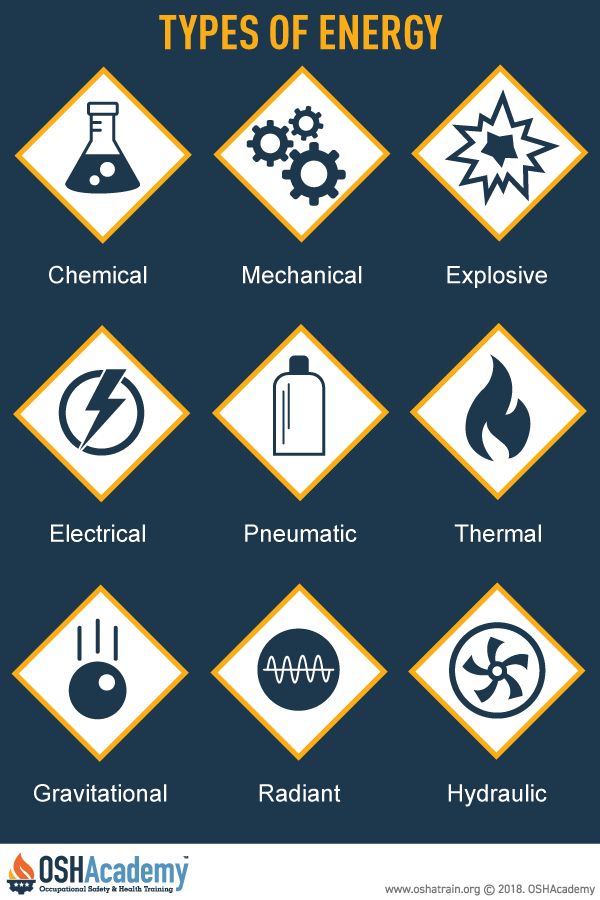Types of Energy
It's important to understand that electricity is not the only form of hazardous energy employees may encounter during lockout/tagout. Main energy sources that supply power to the entire machine or equipment may be electrical, but secondary energy sources such as pneumatic or mechanical energy may still be stored with the potential to cause injury. One or more of the following types of energy may require deenergization to completely isolate the equipment.
- Chemical: Liquids, such as gasoline, diesel, benzene, acids, and caustics. Gases, such as propane, natural gas, and methane. Solids, such as fertilizer, wet and dry cell batteries, and combustible dust.
- Electrical: Alternating (AC) and direct (DC) currents. Includes equipment and conductors at both household and industrial-voltages, photovoltaic systems, circuit breakers, transformers, capacitors, inverters, motors, and hybrid vehicles.
- Gravitational: Objects such as a hoisted vehicles, raised dumpster lids, objects supported by a crane, and elevated dump truck beds. Gravitational energy is one form of potential energy.
- Hydraulic: Pressurized hydraulic systems, including hoses, pumps, valves, actuators, and reservoirs such as those on a forklift, in an automotive vehicle hoist, power press equipment, or an injection molding machine.
- Mechanical: Sources such as a breeze rotating a wind turbine, water moving a paddle wheel, vehicle/mobile equipment movement, and a spring under compression. Extreme sound is also a hazardous mechanical energy.
- Pneumatic: Pressurized air or gas systems, including pipes, pumps, valves, actuators, and pressure vessels such as those found in coating or pesticide sprayers, air compressors, and tank and pipe purging systems.
- Radiant: Energy that travels by waves or particles, particularly electromagnetic radiation such as heat or x-rays. Ionizing radiation includes alpha and beta particles,computed tomography (CT) and X-rays. Non-ionizing radiation includes lasers, radio frequency (RF), and microwave (MW).
- Thermal: Hot water, heated oil, steam, and equipment need time to cool, while liquefied gases, such as nitrogen, need time to warm to safe thermal levels.
- Explosive: The rapid increase in the volume of energy with the generation of high temperatures and the release of gases. Supersonic explosions are called detonations. Subsonic explosions are called deflagration. A boiling liquid expanding vapor explosion is called BLEVE.
Knowledge Check Choose the best answer for the question.
1-3. Which of the following is an example of mechanical energy?
You forgot to answer the question!

